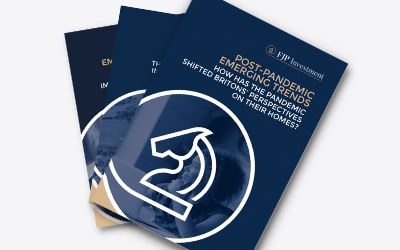Why UK First-Time Buyers Are Facing 31-Year Mortgages
Buying your first home in the UK is a dream for many, but it’s becoming a tougher goal to reach. A recent report highlights that first-time buyers are now typically borrowing for 31 years to afford their homes. This is a big shift from a decade ago when the average mortgage term was 28 years. Rising house prices and higher mortgage rates are pushing buyers to extend their loans, often into retirement. But what does this mean for you? Let’s break it down, explore why this is happening, and share practical tips to navigate the housing market.
Why Are Mortgage Terms Getting Longer?
The UK housing market is no walk in the park. House prices have soared, often outpacing wage growth. According to a recent report, the average home now costs around £273,427, up 3.5% from last year. This makes it harder for first-time buyers to afford a property without stretching their finances. To keep monthly repayments manageable, many are opting for longer mortgage terms, with 31 years now the average for first-time buyers.
Longer terms reduce monthly payments, which is a lifeline for buyers struggling with affordability. However, it comes at a cost. The longer the mortgage, the more interest you pay over time. For example, a £150,000 mortgage at 4% over 25 years has monthly payments of about £792, with total interest of £87,528. Stretch that to 35 years, and payments drop to £664, but the interest balloons to nearly £129,000. It’s a trade-off: lower monthly costs now, but a bigger bill later.
The Impact of High House Prices
House prices are a major driver of this trend. In some areas, like Oxfordshire, average prices hit £479,000, while more affordable regions like Manchester sit around £251,000. This gap pushes many buyers to relocate to cheaper areas, often far from family and friends. The same report notes that 67% of first-time buyers in the last two years have moved to more affordable regions to get on the property ladder.
Rising prices mean bigger deposits are needed too. The average deposit for first-time buyers is around £34,500, but in high-cost areas, it can be much more. Saving this amount is tough, especially with private rents rising by 9.2% last year. Many are stuck renting or living with parents well into their 30s, delaying their homeownership dreams.
How Higher Mortgage Rates Play a Role
Mortgage rates have climbed in recent years, hovering between 4% and 7% for most borrowers. For those with smaller deposits (like 5%), rates often exceed 5%, compared to under 5% for those with a 40% deposit. Higher rates mean higher monthly repayments, so buyers are extending terms to keep costs down.
Despite recent rate cuts by the Bank of England, affordability remains a challenge. The report highlights that even with lower rates, mortgage terms haven’t shortened because rising house prices cancel out the benefits. About two in five new mortgages now extend into retirement, a stark reminder of how stretched finances are.
The Role of Family Support
Getting on the property ladder often requires help. Over half of first-time buyers last year received an average of £55,572 from family, often called the “Bank of Mum and Dad.” This help comes as loans or gifts, easing the deposit burden. However, not everyone has access to this support, and those who do may still need longer mortgages to afford repayments.
Another option gaining popularity is the Joint Borrower Sole Proprietor (JBSP) mortgage. This lets buyers add a family member’s income to boost borrowing power, without the family member owning the property. For example, a buyer earning £33,000 could combine their income with a parent’s £24,000 to qualify for a larger loan. But there’s a catch: the family member is liable if payments are missed, so it’s a big commitment.

Government Schemes for First-Time Buyers
The government offers some help, though it’s not as robust as it once was. The Lifetime ISA (LISA) is a popular choice, allowing 18- to 39-year-olds to save up to £4,000 a year with a 25% government bonus. For example, saving £4,000 gets you a £1,000 bonus, which can go toward a home under £450,000.
Other schemes, like shared ownership, let buyers purchase a portion of a property and rent the rest, with the option to increase their share later. The First Homes scheme targets key workers and first-time buyers with incomes under £80,000 (£90,000 in London) for new-builds. However, these schemes are smaller than the now-ended Help to Buy program, which some say drove up prices.
Challenges of Long-Term Mortgages
Longer mortgages have drawbacks. Paying into retirement can strain future finances, especially if pensions or savings fall short. About 40% of new mortgages now extend past retirement age, which wasn’t common a decade ago. This trend reflects the tough reality: homeownership is increasingly out of reach without significant sacrifices.
Another issue is the total cost. Longer terms mean more interest, which can add tens of thousands to the loan. Buyers need to weigh whether lower monthly payments now are worth the extra cost later. It’s also worth noting that lenders often cap terms at 40 years, and some require the mortgage to be paid off by age 75.
Tips for First-Time Buyers
Navigating this market isn’t easy, but there are ways to improve your chances. Start saving early, ideally through a Lifetime ISA, to benefit from the government bonus. Check your credit report to ensure it’s in good shape before applying for a mortgage.
Consider relocating to a more affordable area if possible, as 67% of recent buyers have done. Look into JBSP mortgages or professional mortgages if you’re in a secure career like teaching or healthcare, as some lenders offer better terms for these professions.
Finally, speak to a mortgage broker early. They can guide you on the best deals and schemes, even if you’re years away from buying. The sooner you plan, the better prepared you’ll be.
What’s Next for the UK Housing Market?
The housing market shows some resilience, thanks to low unemployment and wage growth. However, affordability challenges persist. The government aims to build 1.5 million new homes in England over the next five years, which could ease price pressures. But with mortgage approvals dropping for four consecutive months, the market may cool after a busy start to 2025.
Buyers also face extra costs, like stamp duty changes that hit after March 31, 2025. Missing this deadline cost some buyers thousands, adding to the financial strain. Staying informed and acting quickly can make a big difference.
Final Thoughts
The 31-year mortgage trend reflects the tough reality for UK first-time buyers. High house prices, rising rates, and the need for big deposits are pushing buyers to borrow for longer. While schemes like the Lifetime ISA and family support can help, the dream of homeownership often comes with compromises.
By planning early, exploring all options, and seeking professional advice, you can improve your chances of getting on the ladder. The road may be long, but with the right steps, it’s still within reach.
ARE YOU READY TO START INVESTING?
Subscribe to our mailing list now for exclusive deals, investment guides and the latest information from the property market.







